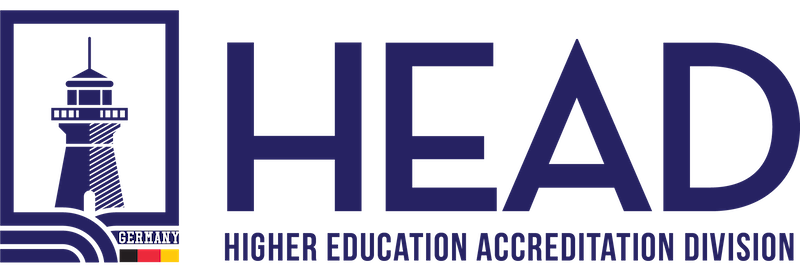Ensuring Educational Excellence: Fulfilling Requirements of an Educational Organizations Management System

Introduction
In the rapidly evolving landscape of higher education, universities and educational providers face the critical task of delivering quality educational services while adapting to changing needs. To meet this challenge, many institutions turn to an Educational Organizations Management System (EOMS). By determining the system’s boundaries and applicability, universities can ensure the scope of their EOMS aligns with their products and services. In this article, we explore the steps that universities and higher education providers can take to demonstrate their fulfillment of these requirements and their commitment to educational excellence.
Conduct a comprehensive assessment:
Universities and higher education providers must begin by conducting a thorough assessment of their organizational structure, functions, and services. This assessment should encompass all aspects of their educational offerings, including academic programs, research activities, student support services, and any additional educational initiatives. By undertaking this comprehensive evaluation, institutions can gain a clear understanding of the scope and nature of their educational operations.
Identify key educational aspects:
Building upon the assessment, institutions need to identify the key educational aspects that are relevant to their Educational Organizations Management System. This involves understanding the unique characteristics, objectives, and impacts of their educational offerings. By recognizing these crucial elements, universities can ensure that their EOMS addresses the specific requirements and challenges associated with their educational programs and services.
Consider regulatory requirements and standards:
Compliance with regulatory requirements and adherence to industry standards are essential in the field of education. Universities and higher education providers should review applicable regulatory frameworks and quality standards to ensure they meet the necessary obligations. By understanding and fulfilling these requirements, institutions can demonstrate their commitment to maintaining educational integrity and accountability.
Define the scope of the EOMS:
With a clear understanding of the educational aspects and regulatory considerations, institutions can proceed to define the scope of their Educational Organizations Management System. This step involves determining the boundaries and applicability of the system. The scope should outline the educational functions, processes, and activities that will be covered, ensuring a comprehensive approach to managing educational operations.
Document the scope:
Documentation plays a crucial role in demonstrating compliance and transparency. It is essential for universities and higher education providers to document the determined scope of their Educational Organizations Management System. This documentation should clearly outline the covered educational processes, functions, and services, as well as the associated objectives, requirements, and improvement plans.
Develop policies and procedures:
To effectively implement the Educational Organizations Management System, institutions must develop and implement policies and procedures that address the identified educational aspects and requirements. These policies should reflect a commitment to educational quality, student success, and continuous improvement. The procedures should provide clear guidelines for managing and delivering educational services effectively, fostering a culture of excellence throughout the organization.
Implement the EOMS:
Implementation of the Educational Organizations Management System requires active engagement from faculty, staff, and stakeholders. Universities and higher education providers should provide training, assign responsibilities, and establish mechanisms for communication and collaboration. By ensuring effective implementation, institutions can leverage the EOMS to enhance educational processes and outcomes.
Monitor and measure performance:
Regular monitoring and measurement of educational performance are vital to demonstrate compliance and drive improvement. Institutions should establish mechanisms to assess student outcomes, evaluate teaching effectiveness, and gather feedback from stakeholders. By utilizing appropriate metrics, universities can track progress, identify areas for improvement, and make data-informed decisions to enhance educational quality.
Review and continuous improvement:
To maintain the relevance and effectiveness of the Educational Organizations Management System, regular review and continuous improvement are necessary. Institutions should periodically evaluate the scope, policies, procedures, and performance data associated with their Educational Organizations Management System. This process allows for the identification of opportunities for enhancement and the implementation of necessary adjustments to ensure the system remains aligned with evolving educational needs.
Conclusion
By following these steps and demonstrating their fulfillment of the requirements for determining the boundaries and applicability of an Educational Organizations Management System (EOMS), universities and higher education providers can showcase their commitment to educational excellence. Through a comprehensive assessment, identification of key educational aspects, adherence to regulatory requirements and standards, and the establishment of a well-defined scope, institutions can effectively manage and enhance their educational operations.
By documenting the scope, developing policies and procedures, and implementing the Educational Organizations Management System with the active involvement of stakeholders, universities can create a culture of continuous improvement and ensure the delivery of high-quality educational services. Ongoing monitoring and measurement of performance allow institutions to track progress, identify areas for improvement, and make data-driven decisions.
Periodic reviews of the Educational Organizations Management System ensure its continued relevance and effectiveness, enabling universities and higher education providers to adapt to changing educational landscapes and meet evolving needs. By demonstrating their commitment to educational excellence through compliance, transparency, and continuous improvement, institutions can inspire confidence among students, faculty, staff, and other stakeholders.
Moreover, showcasing fulfillment of these requirements can positively impact institutional reputation, attract prospective students, and foster collaboration with industry partners and regulatory bodies. It establishes universities and higher education providers as leaders in the field, dedicated to providing exceptional educational experiences and preparing students for success in their chosen fields.
In conclusion, by fulfilling the requirements for determining the boundaries and applicability of an Educational Organizations Management System (EOMS), universities and higher education providers demonstrate their commitment to educational excellence. Through a holistic approach encompassing assessment, identification, compliance, and continuous improvement, institutions can enhance educational processes, foster a culture of excellence, and contribute to the advancement of knowledge and societal progress.
Source: HEAD – Higher Education Accreditation Division
Would you like to speak to one of our Higher Education Accreditation Expert? Just submit your details and we’ll be in touch shortly. You can also email us if you would prefer.

